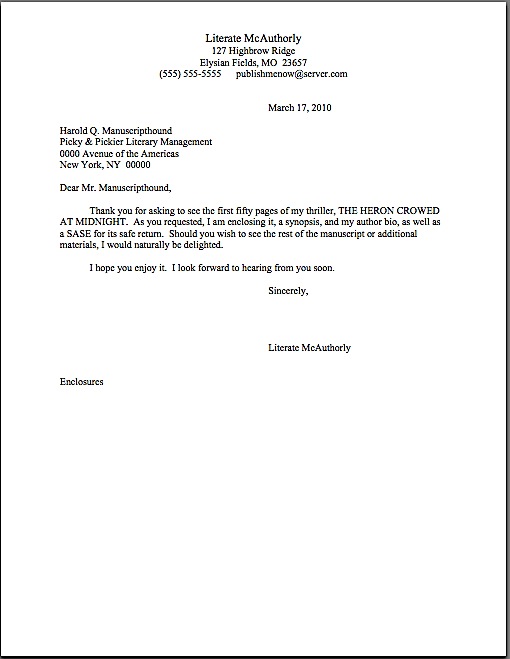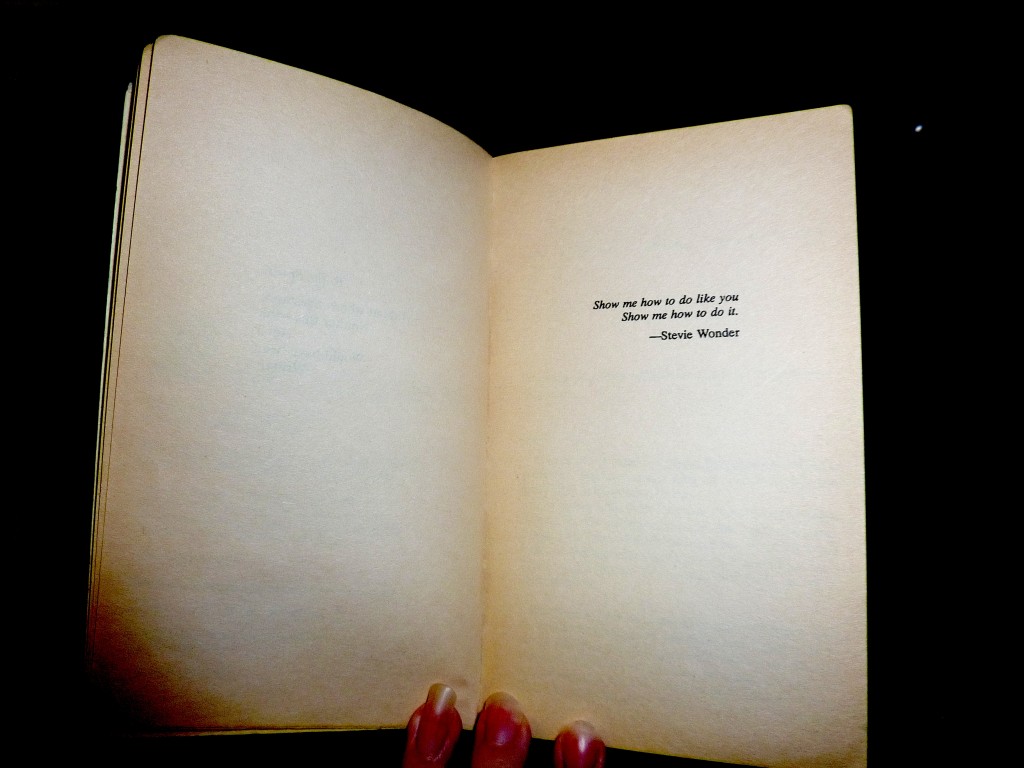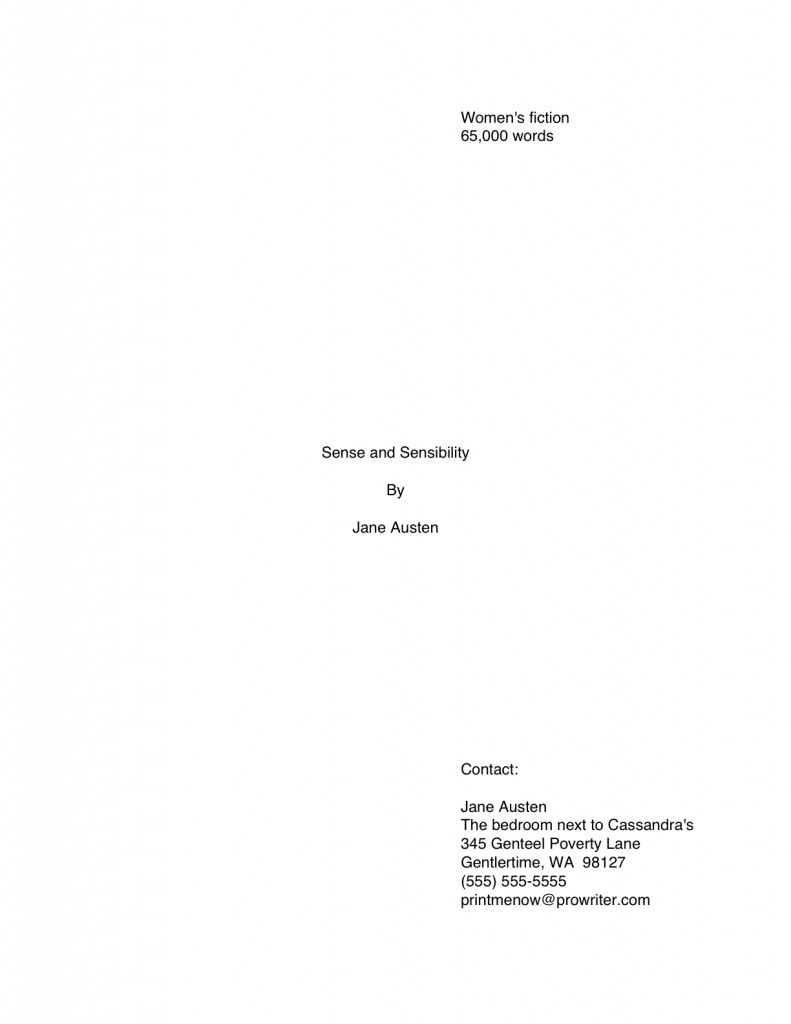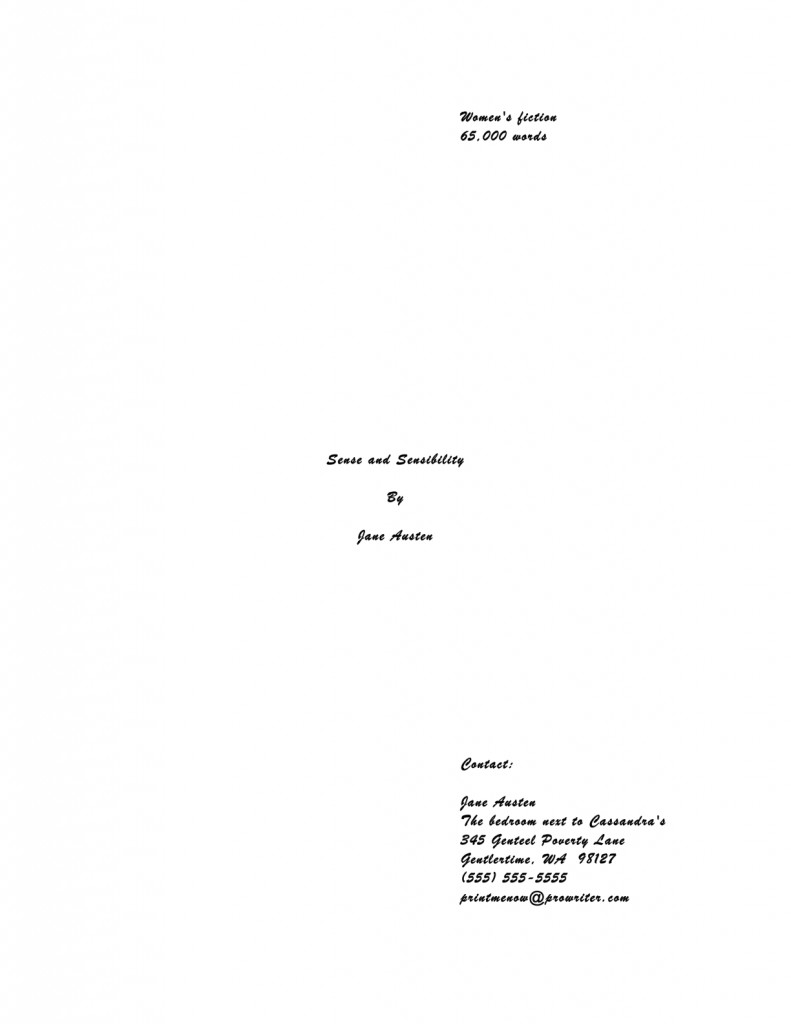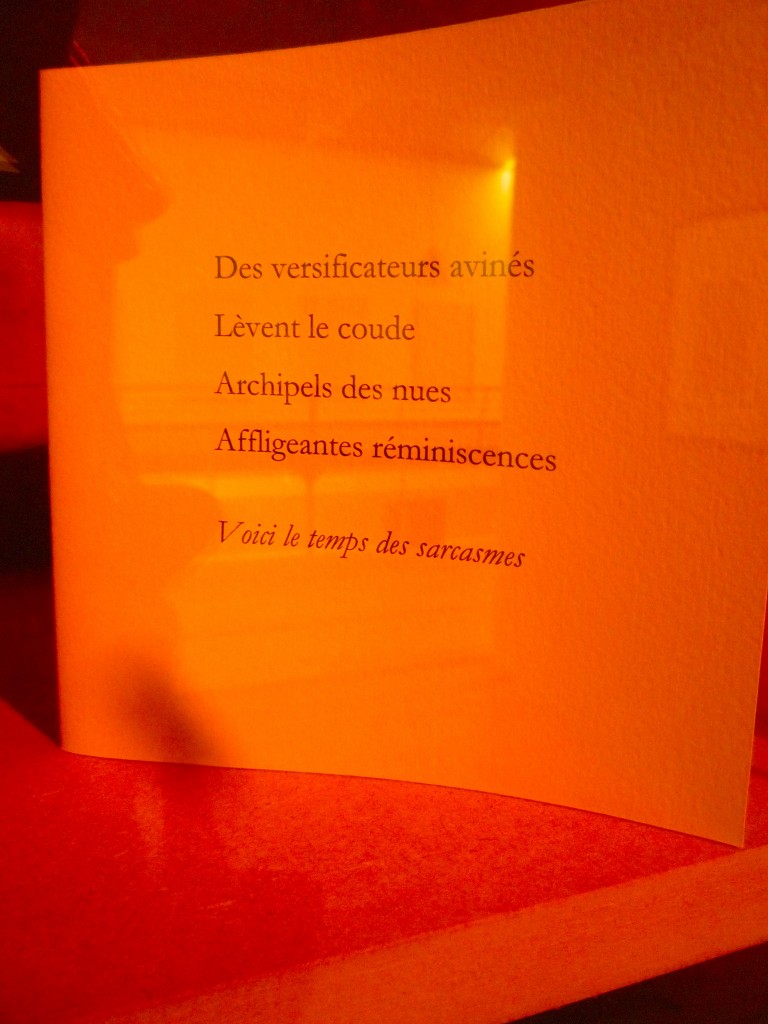
For the last few posts, I’ve been concentrating upon that bane of writers everywhere, the 1-page synopsis. A 1-page synopsis should be a quick, pithy introduction to the premise, the protagonist, and the central conflict of the book. Or, to cast it in terms that those of you who followed my recent Querypalooza series should find very familiar, an extended version of the descriptive paragraph in a query letter.
So hey, all of you queriers who have been clutching your temples and moaning about the incredible difficulty of describing your 400-page manuscript in a single, pithy paragraph: I’ve got some good news. There are agencies out there who will give you a whole page to do it!
Does that deafening collective groan mean that you’re not grateful for triple or even quadruple the page space in which to describe your book? Is there no pleasing you people?
Okay, okay — so it may not be a piece o’ proverbial cake to introduce the premise, the protagonist, and the central conflict of the boo within a single page in standard format, but by this point in the series, I hope the prospect at least seems preferable to, say, confronting an angry cobra or trying to reason with pack of wolves. Constructing an eye-catching 1-page synopsis is more of a weeding-the-back-yard level of annoyance, really: a necessarily-but-tedious chore.
Seriously, successfully producing a 1-page synopsis is largely a matter of strategy, not creativity, and not even necessarily talent. As long as you don’t fall down the rabbit hole of one of the most common short synopsis-writing mistakes — trying to replicate each twist and turn of the plot/argument; generalizing so much that the book sounds generic; writing book jacket promotional copy rather than introducing the story — it’s simply a matter of telling Millicent what your book is ABOUT.
Preferably in a tone and at a vocabulary level at least vaguely reminiscent of the manuscript. Is that really so much — or so little, depending upon how you chose to look at it — to ask?
By contrast, the 5-page synopsis – which, until fairly recently, was far and away the most common requested length, as it still is for those already signed with agents and/or working with editors at publishing houses — should tell the STORY of your book (or state its argument) in as much vivid, eye-catching detail as you may reasonably cram into so few pages. Preferably by describing actual scenes, rather than simply summarizing general plot trends, in language that is both reflective of the manuscript’s and is enjoyable to read.
Why concentrate upon how you tell the story here, you ask, rather than merely cramming the entire plot onto a few scant pages? Why, to cause the agent, editor, or contest judge reading it exclaim spontaneously, “Wow — this sounds like one terrific book; this writer is a magnificent storyteller,” obviously.
Again, piece of cake to pull off in just a few pages, right?
Well, no, but don’t avert your eyes, please, if you are not yet at the querying stage — as with the author bio, I strongly recommend getting your synopsis ready well before you anticipate needing it. As I MAY have mentioned before, even if you do not intend to approach an agent whose website or agency guide listing asks for a synopsis to be tucked into your query packet, you will be substantially happier if you walk into any marketing situation with your synopsis already polished, all ready to send out to the first agent or editor who asks for it, rather than running around in a fearful dither after the request, trying to pull your submission packet together.
Even if you think that both of the reasons I have just given are, to put it politely, intended to help lesser mortals not anywhere near as talented than your good self, whatever you do, try not to save writing your synopsis for the very last moments before you stuff a submission or entry into an envelope. That route virtually guarantees uncaught mistakes, even for the most gifted of writers and savviest of self-promoters.
In fact, you take nothing else away from Synopsispalooza, please remember this: writing a synopsis well is hard, even for the most seasoned of pros; be sure to budget adequate time for it. Forcing yourself to do it at the last minute may allow you to meet the technical requirement, but it is not conducive to producing a synopsis that will do what you want it to do and sound like you want it to sound.
If the task feels overwhelming — which would certainly be understandable — remind yourself that even though it may feel as though you effectively need to reproduce the entire book in condensed format, you actually don’t. Even a comparatively long synopsis shouldn’t depict every twist and turn of the plot.
Yes, even if the agency or contest of your desires asks for an 8- or 10-page synopsis. Trust me, people who work with manuscripts for a living are fully aware that cutting down a 370-page book to the length of a standard college term paper is not only impossible, but undesirable. So don’t even try.
What should you aim for instead? Glad you asked: in a 3-8 page synopsis, just strive to give a solid feel of the mood of the book and a basic summary of the primary plot, rather than all of the subplots. Show where the major conflicts lie, introduce the main characters, interspersed with a few scenes described with a wealth of sensual detail, to make it more readable.
Sound vaguely familiar? It should; it’s an extension of our list of goals for the 1-page synopsis. Let’s revisit those, shall we?
(1) introduce the major characters and premise,
(2) demonstrate the primary conflict(s),
(3) show what’s at stake for the protagonist, and
(4) ideally, give some indication of the tone and voice of the book.
Now let’s add in the loftier additional goals of the slightly longer synopsis:
(5) show the primary story arc through BRIEF descriptions of the most important scenes. (For nonfiction that isn’t story-based, present the planks of the overarching argument in logical order, along with some indication of how you intend to prove each point.)
(6) show how the plot’s primary conflict is resolved or what the result of adopting the book’s argument would be.
I sense some squirming from the summary-resistant out there. “But Anne,” some of you protest, “am I missing something here? You’ve just told us not to try to summarize the entire book — yet what you’re suggesting here sounds a heck of a lot like sitting down and doing just that!”
Actually, I’m not doing any such thing, summary-resisters. The distinction lies in the details: I’m advising you to winnow the story down to its most essential elements, rather than trying to list everything that happens.
Yes, of course, there’s a difference. What an appallingly cynical thought.
If you’re having serious difficulty separating the essential from the merely really, really important or decorative in your storyline, you may be staring too closely at it. Try to think of your story as a reader would — if a prospective reader asked you what your book was about and you had only a couple of minutes to answer, what would you say?
And no, I’m not talking about that ubiquitous writerly response that begins with a gigantic sigh and includes a fifteen-minute digression on what scenes in the novel are based on real life. I’m talking about how you would describe it if you were trying to sound like a professional writer trying to get published — or, if it helps to think of it this way, like an agent describing a terrific new client’s work to an editor.
You wouldn’t waste the editor’s time rhapsodizing about the quality of the writing or what a major bestseller it was destined to be, would you? No, that would be a waste of energy: pretty much every agent thinks his own clients’ work is well-written and marketable. Instead, you would relate the story or argument in the terms most likely to appeal to readers who already buy similar books.
If you absolutely can’t get that account down to 5 minutes or so, try giving the 20-minute version to a good listener who hasn’t read a syllable of your manuscript, then asking her to tell the plot of the book back to you. The elements she remembers to include are probably — wait for it — the most memorable.
Or, if you don’t want to go out on a limb by recruiting others to help you, sit down all by your lonesome, picture your favorite English teacher standing over you, set the actual happenings of the novel aside for a moment, and write a brief summary of the book’s themes.
Oh, stop rolling your eyes; most authors are delighted to analyze their own books. Pretend that your book has just been assigned in a college English class — what would you expect the students to be able to say about it on the final?
No, the result will almost certainly not be a professional synopsis; this is an exercise intended to help you identify the essential of your storyline. It will also help you separate the plot or argument’s essentials from the secondary issues.
Why is that a necessary step? Well, lest we forget, a synopsis is a writing sample. It would hardly show off your scintillating literary voice or world-class storytelling acumen to provide Millicent with a simple laundry list of events, would it?
Please at least shake your head, if you cannot provide me with a ringing, “No, by jingo!” If you can’t even muster that, take a gander at how such a list might read:
SUZIE MILQUETOAST (34) arrives at work one day to find her desk occupied by a 300-pound gorilla (MR. BUBBLES, 10). She goes and asks her supervisor, VERLANDA MCFUNNYNAME (47) what is going on. Verlanda isn’t sure, but she calls Human Resources, to find out if Suzie has been replaced. She has not, but who is going to ask a 300-pound gorilla to give up his seat to a lady? Next, Verlanda asks her boss, JAMES SPADER (52), what to do, and he advises calling the local zoo to see if any primates might by any chance have escaped. Well, that seems like a good idea, but the zoo’s number seems to have been disconnected, so Suzie and Verlanda traipse to Highlander Park, only to discover…
Well, you get the picture: it reads as though the writer had no idea what to leave out. Not entirely coincidentally, it reads like a transcript of what most aspiring writers do when asked, “So what’s your book about?”
How does a seasoned author answer that question? As though she’s just been asked to give a pitch:
GORILLAS IN OUR MIDST is a humorous novel about how rumors get out of hand — and how power structures tend to cater to our fears, not our desires. It’s aimed at the 58 million office workers in the US, because who understands how frustrating it can be to get a bureaucracy to move than someone who actually works within one? See how this grabs you: Suzie Milquetoast arrives at work one day to find a 300-pound gorilla sitting at her desk. Is the zoo missing an inmate, or did HR make another hideously inappropriate hire?
A full synopsis? Of course not — but you have to admit, it’s a pretty good elevator pitch. It also wouldn’t be a bad centerpiece for a query letter, would it?
Which means, by the way, that it could easily be fleshed out with juicy, interesting, unique details lifted from the book itself. Add a couple of paragraphs’ worth, and you’ve got yourself a 1-page synopsis. Add more of the story arc, including the ending, toss in a few scene descriptions, stir, and voilà! You’ve got yourself a 3-page synopsis.
And how might you turn that into a recipe for a 5-page synopsis? Get a bigger bowl and add more ingredients, naturally.
But in order to select your ingredients effectively, you’re going to have to figure out what is essential to include and what merely optional. A few quiz questions, to get you started:
(a) Who is the protagonist, and why is s/he interesting? (You’d be astonished at how few novel synopses give any clear indication of the latter.)
To put it another way, what about this character in this situation is fresh? What about this story will a Millicent who screens submissions in this book category not have seen within the last week?
(b) What does my protagonist want more than anything else? What or who is standing in the way of her/his getting it?
(c) Why is getting it so important to her/him? What will happen if s/he doesn’t get it?
(d) How does the protagonist grow and change throughout pursuing this goal? What are the most important turning points in her/his development?
(e) How does the protagonist go about achieving this goal?
See? Piece of proverbial…hey, wait just a minute! Why, those questions sound a mite familiar, don’t they?
Again, they should: they’re the underlying issues of goals 1-3 and 5-6, above. If you answer them in roughly the same voice as the book, you will have met goal #4, as well — and, almost without noticing it, you will have the basic material for a dandy synopsis.
I told you: piece of cake.
Don’t, I implore you, make the extremely common mistake of leaving out point #6 — the one that specifies that you should include the story’s ending in the synopsis. Too many aspiring writers omit this in a misguided endeavor to goad Millicent and her ilk into a frenzy of wonder about what is going to happen next.
“But I want to make them want to read the book!” such strategists invariably claim. “I don’t want to give away the ending. Leaving the synopsis on a cliffhanger will make them ask to see it right away. Besides, how do I know that someone won’t steal my plot and write it as their own?”
To professional eyes, leaving out the ending is a rookie mistake, at least in a synopsis longer than a page. In fact, it’s frowned-upon enough that some Millicents have been known to reject projects on this basis alone.
Half of you who currently have synopses out circulating just went pale, didn’t you?
Perhaps I should have broken it to you a bit more gently. Here goes: from a professional point of view, part of the goal of an extended synopsis is to demonstrate to someone who presumably hasn’t sat down and read your entire book that you can in fact plot out an entire novel plausibly. Agents and editors regard it as the writer’s job to demonstrate this in an extended synopsis, not theirs to guess how the plot might conceivably come to a halt.
I hate to be the one to break it to you (at least before I’ve helped you all to a slice of cake), but a talented sentence-writer’s possessing the skills, finesse, and tenacity to follow a story to its logical conclusions is not a foregone conclusion. In practice, the assumption tends to run in the opposite direction: if the synopsis leaves out the how the plot resolves, Millicent and her cousin Maury (the editorial assistant at a major publishing house) will tend to leap to one of four conclusions, none of which are good for a submitter. They are left to surmise that:
a) the synopsis’ writer isn’t aware of the purpose of an extended synopsis, having confused it with back jacket copy, and thus is a fish that should be thrown back into the sea until it grows up a little.
In other words, next!
b) the synopsis’ author is a tireless self-promoter and/or inveterate tease, determined not to cough up the goods until there is actual money on the table. Since this is simply not how the publishing industry works, the fish analogy above may reasonably be applied here as well.
Again, next!
c) the synopsis’ author is one of the many, many writers exceptionally talented at coming up with stupendous premises, but less adept at fleshing them out. S/he evidently hopes to conceal this weakness from Millicent and Maury until after they have already fallen in love with the beauty of her/his prose and plotting in the early part of the book, in an attempt to cajole their respective bosses into editing the heck out of the novel before it could possibly be ready to market.
The wily fiend! Next!
d) or, less charitably, the synopsis’ author hasn’t yet written the ending, and thus is wasting their respective boss’ time by submitting an incomplete novel.
All together now: next!
Include some indication of how the plot resolves. Millicent, Maury, and their Aunt Mehitabel (the veteran contest judge) will thank you for it. They might even give you a piece of that delicious cake I keep mentioning.
Does that monumental gusty sigh I just heard out there in the ether mean that I have convinced you on that point? “All right, Anne,” synopsizers everywhere murmur with resignation, “I’ll give away the goods. But I have a lingering question about #4 on your list above, the one about writing the synopsis in roughly the same voice and in the same tone as the novel it summarizes. I get that a comic novel’s synopsis should contain a few chuckles; an ultra-serious one shouldn’t. A steamy romance’s synopsis should be at least a little bit sexy, a thriller’s a trifle scary, and so forth. But I keep getting so wrapped up in the necessity of swift summarization that my synopsis ends up sounding nothing like the book! How should I remedy this — by pretending I’m the protagonist and writing it from his point of view?”
Um, no. Nor should you even consider writing it in the first person, unless you happen to have written a memoir.
Nor is there any need to get obsessed with making sure the tone is absolutely identical to the book’s — in the same ballpark will do. You just want to show that you are familiar with the type of writing expected in the type of book you’ve written and can produce it consistently, even in a relatively dry document.
Piece of — oh, never mind.
There’s a practical reason for demonstrating this skill at the querying and submission stages: it’s a minor selling point for a new writer. Increasingly, authors are expected to promote their own books; it’s not at all uncommon these days for a publishing house to ask the author of a soon-to-be-released book to write a magazine or online article in the book’s voice, for promotional purposes, for instance. Or a blog, like yours truly.
Yes, I know; you want to concentrate on your writing, not its promotion. The muses love you for that impulse. But would you rather that I lied to you about the realities of being a working author?
I thought not. Let’s move on.
What you should also not do — but, alas, all too many aspiring writers attempt — is to replicate the voice of the book by lifting actual sentences from the novel itself, cramming them indiscriminately into the synopsis. I know that you want to show off your best writing, but trust me, you’re going to want to make up some new verbiage here.
Why, you ask? Hint: people who go into the manuscript-reading business tend to have pretty good memories.
Trust me, they recall what they’ve read. When I was teaching at a university, I was notorious for spotting verbiage lifted from papers I’d graded in previous terms; the fraternities that maintained A paper files actively told their members to avoid my classes.
Similarly, a really on-the-ball Millicent might recognize a sentence she read a year ago — and certainly one that she scanned ten minutes ago in a synopsis if it turns up on page 1 of the attached manuscript.
See the problem? No? What if I tell you that in a submission packet, the chapters containing the lifted verbiage and the synopsis are often read back-to-back?
Ditto with query packets. And good 30% of contest entries make this mistake, reproducing in the synopsis entire sentences or even entire paragraphs from the chapters included in the entry. Invariably, the practice ends up costing the entry originality points.
Do I see some raised hands from those of you who habitually recall what you’ve read? “But Anne,” some of you point out huffily, and who could blame you? “Didn’t you tell us just yesterday that it was a grave error to assume that Millicent, Maury , and/or Mehitabel will necessarily read both our synopses and the rest of our submissions?”
Excellent point, sharp-eyed readers: the operative word here is necessarily. While it’s never safe to assume that EVERYONE who reads your synopsis will also read your opening chapter, it’s also not a very good idea to assume that NO ONE will. Shooting for a happy medium — including enough overlap that someone who read only one of them could follow the plot without indulging in phrase redundancy — tends to work best here.
Should you be tempted to repeat yourself, I implore you to counter that impulse by asking this question with all possible speed: “Is there a vibrantly interesting detail that I could insert here instead?”
To over-writers, it may seem a trifle odd to suggest adding detail to a piece of writing as short as 5 pages, but actually, most synopses suffer from overgrowths of generalization and an insufficiency of specifics. So once you have a solid draft, read it over and ask yourself: is what I have here honestly a reader-friendly telling of my story or a convincing presentation of my argument (don’t worry, NF writers: I’ll deal with your concerns at length in a separate post), or is it merely a presentation of the premise of the book and a cursory overview of its major themes?
For most synopses, it is the latter.
Do I hear some questions amid the general wailing and gnashing of teeth out there? “But Anne,” a couple of voices cry from the wilderness, “How can I tell the difference between a necessary summary statement and a generalization?”
Again, excellent question. The short answer: it’s hard. Here’s a useful litmus test.
(1) Print up a hard copy of the synopsis, find yourself a highlighting pen, and mark every summary statement about character, every time you have wrapped up a scene or plot twist description with a sentence along the lines of and in the process, Sheila learns an important lesson about herself.
(2) Go back through and take a careful look at these highlighted lines.
(3) Ask yourself for each: would a briefly-described scene SHOW the conclusion stated there better than just TELLING the reader about it? Is there a telling character detail or an interesting plot nuance that might supplement these general statements, making them more interesting to read?
I heard that gasp of recognition out there — yes, campers, the all-pervasive directive to SHOW, DON’T TELL should be applied to synopses as well. Generally speaking, the fewer generalities you can use in a synopsis, the better.
I’ll let those of you into brevity for brevity’s sake in on a little secret: given a choice, specifics are almost always more interesting to a reader than vague generalities. Think about it from Millicent’s perspective — to someone who reads 100 synopses per week, wouldn’t general statements about lessons learned and hearts broken start to sound rather similar after awhile?
But a genuinely quirky detail in a particular synopsis — wouldn’t that stand out in your mind? And if that unique grabber appeared on page 1 of the synopsis, or even in the first couple of paragraphs, wouldn’t you pay more attention to the rest of the summary?
Uh-huh. So would Millicent.
It’s very easy to forget in the heat of pulling together a synopsis that agency screeners are readers, too, not just decision-makers. They like to be entertained, so the more entertaining you can make your synopsis, the more likely Millicent is to be wowed by it. So are Maury and Mehitabel.
Isn’t it fortunate that you’re a writer with the skills to pull that off?
If your synopsis has the opposite problem and runs long (like, I must admit, today’s post), you can also employ the method I described above, but with an editorial twist:
(1) Sit down and read your synopsis over with a highlighter gripped tightly in your warm little hand. On your first pass through, mark any sentence that does not deal with the primary plot or argument of the book.
(2) Go back through and read the UNMARKED sentences in sequence, ignoring the highlighted ones.
(3) Ask yourself honestly: does the shorter version give an accurate impression of the book?
(4) If so — take a deep breath here, please; some writers will find the rest of this question upsetting – do the marked sentences really need to be there at all?
If you’ve strenuously applied the steps above and your synopsis still runs too long, try this trick of the pros: minimize the amount of space you devote to the book’s premise and the actions that occur in Chapter 1.
Sounds wacky, I know, but the vast majority of synopses spend to long on it. Here’s a startling statistic: in the average novel synopsis, over a quarter of the text deals with premise and character introduction.
So why not be original and trim that part down to just a few sentences and moving on to the rest of the plot?
This is an especially good strategy if you’re constructing a synopsis to accompany requested pages or even unrequested pages that an agency’s website or agency guide listing says to tuck into your query packet, or contest entry. Think about it: if you’re sending Chapter 1 or the first 50 pages, and if you place the chapter BEFORE the synopsis in your submission or query packet (its usual location), the reader will already be familiar with both the initial premise AND the basic characters AND what occurs at the beginning in the book before stumbling upon the synopsis.
So I ask you: since space is at a premium on the synopsis page, how is it in your interest to be repetitious?
Allow me show you how this might play out in practice. Let’s continue this series’ tradition of pretending that you are Jane Austen, pitching SENSE AND SENSIBILITY to an agent at a conference. (Which I suspect would be a pretty tough sell in the current market, actually.) Let’s further assume that you gave a solid, professional pitch, and the agent is charmed by the story. (Because, no doubt, you were very clever indeed, and did enough solid research before you signed up for your agent appointment to have a pretty fair certainty that this particular agent is habitually charmed by this sort of story.) The agent asks to see a synopsis and the first 50 pages.
See? Advance research really does pay off, Jane.
Naturally, you dance home in a terrible rush to get those pages in the mail. As luck would have it, you already have a partially-written synopsis on your computer. (Our Jane’s very into 21st-century technology.) In it, the first 50 pages’ worth of action look something like this:
Now, all of this does in fact occur in the first 50 pages of SENSE AND SENSIBILITY, at least in my well-worn little paperback edition. However, all of the plot shown above would be in the materials the agent requested, right? Do you really need to spend 2 of your allotted 5 pages on this small a section of the plot, even if it is the set-up for what happens later on?
Of course not. Being a wise Aunt Jane, you would streamline this portion of your submission synopsis so it looked a bit more like this:
And then go on with the rest of the story, of course.
See what space-saving wonders may be wrought by cutting down on the premise-establishing facts? The second synopsis is less than half the length of the first, yet still shows enough detail to show the agent how the submitted 50 pp. feeds into the rest of the book. Well done, Jane!
While all of you novelists are hard at work, trying to perform a similar miracle upon your synopses, next time, I shall be tackling the specialized problems of the nonfiction synopsis. Yes, that’s right: we’re going to have our cake and eat it, too.
Don’t just ignore that 300-pound gorilla; work with him. And, of course, keep up the good work!
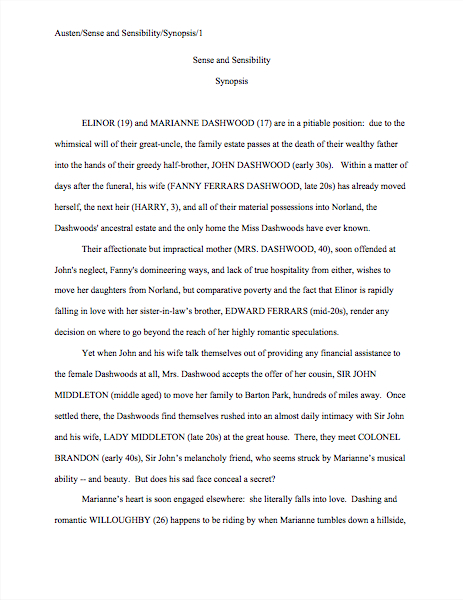
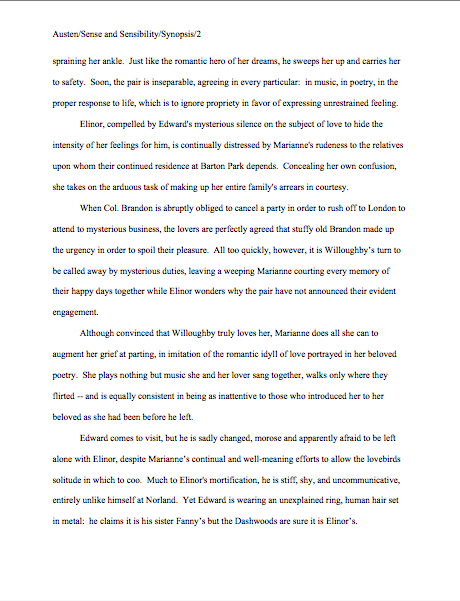
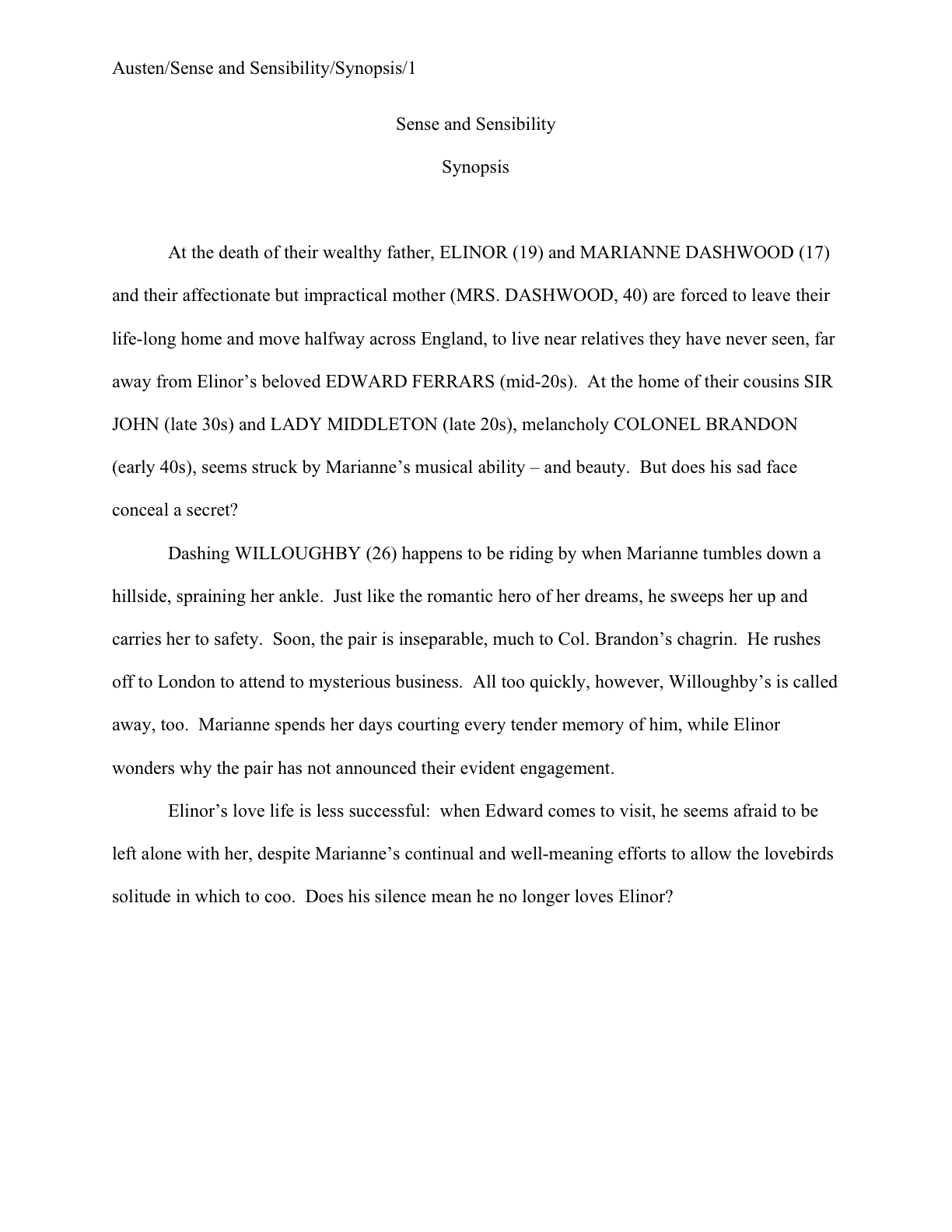


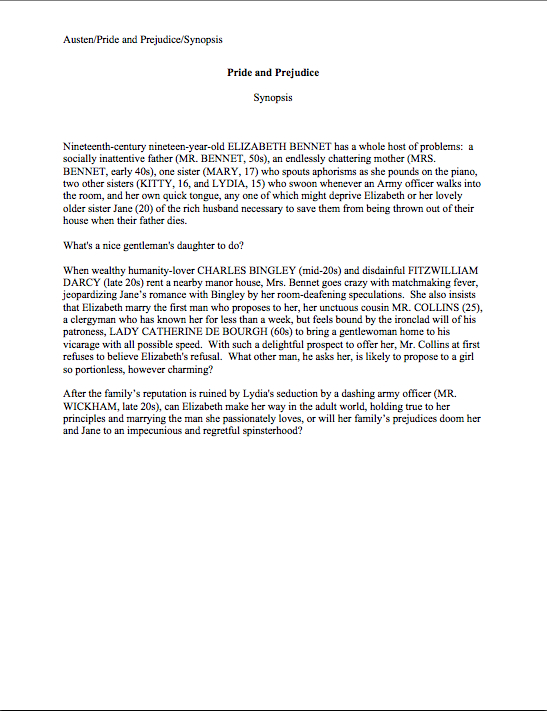










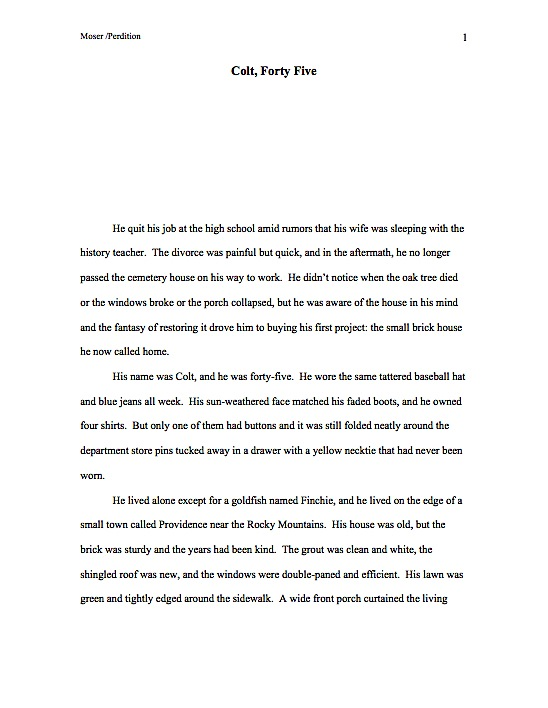

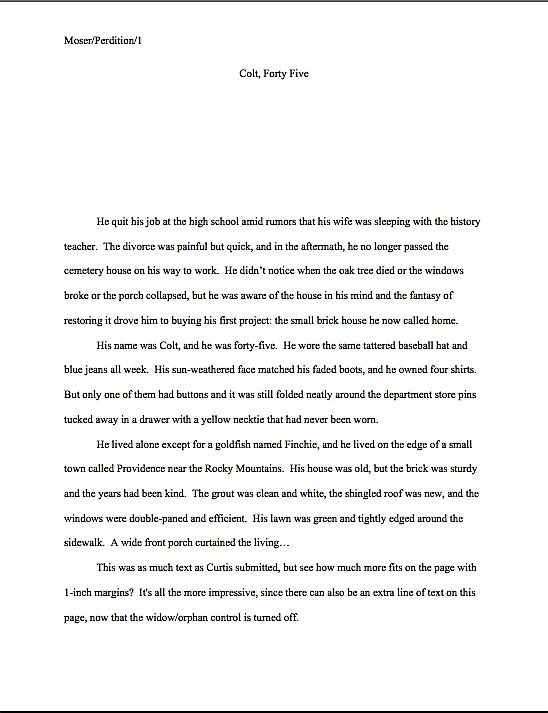


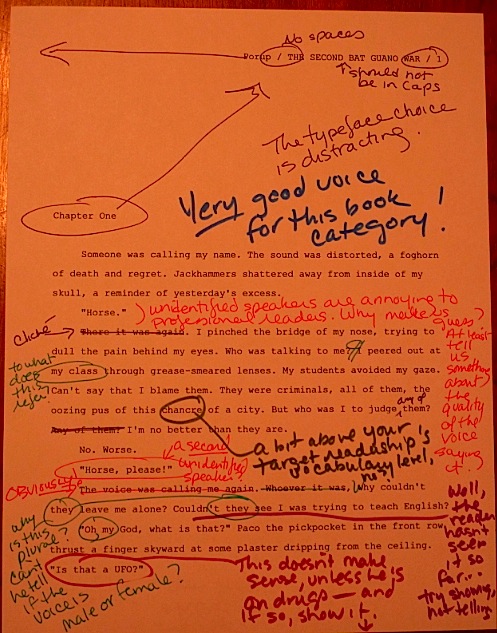

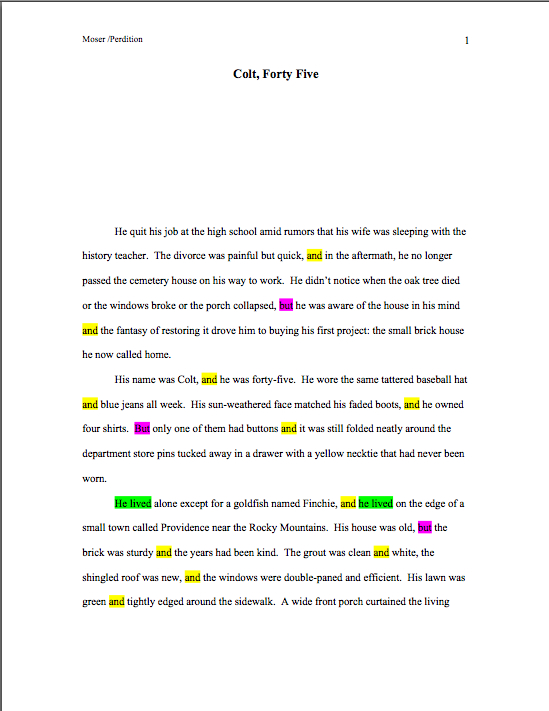






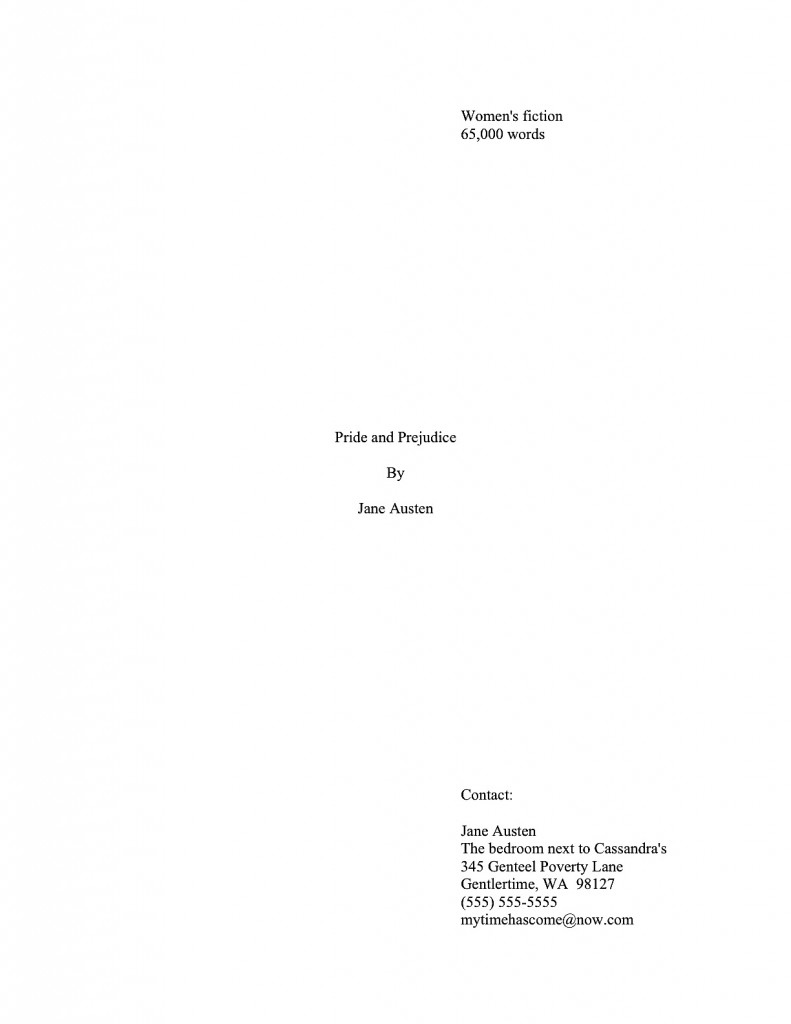


 No matter how many pages or extra materials you were asked to send, do remember to read your submission packet IN ITS ENTIRETY, IN HARD COPY, and OUT LOUD before you seal that envelope. Lest we forget, everything you send to an agency is a writing sample: impeccable grammar, punctuation, and printing, please.
No matter how many pages or extra materials you were asked to send, do remember to read your submission packet IN ITS ENTIRETY, IN HARD COPY, and OUT LOUD before you seal that envelope. Lest we forget, everything you send to an agency is a writing sample: impeccable grammar, punctuation, and printing, please.
